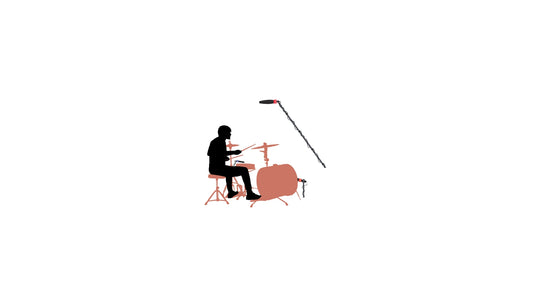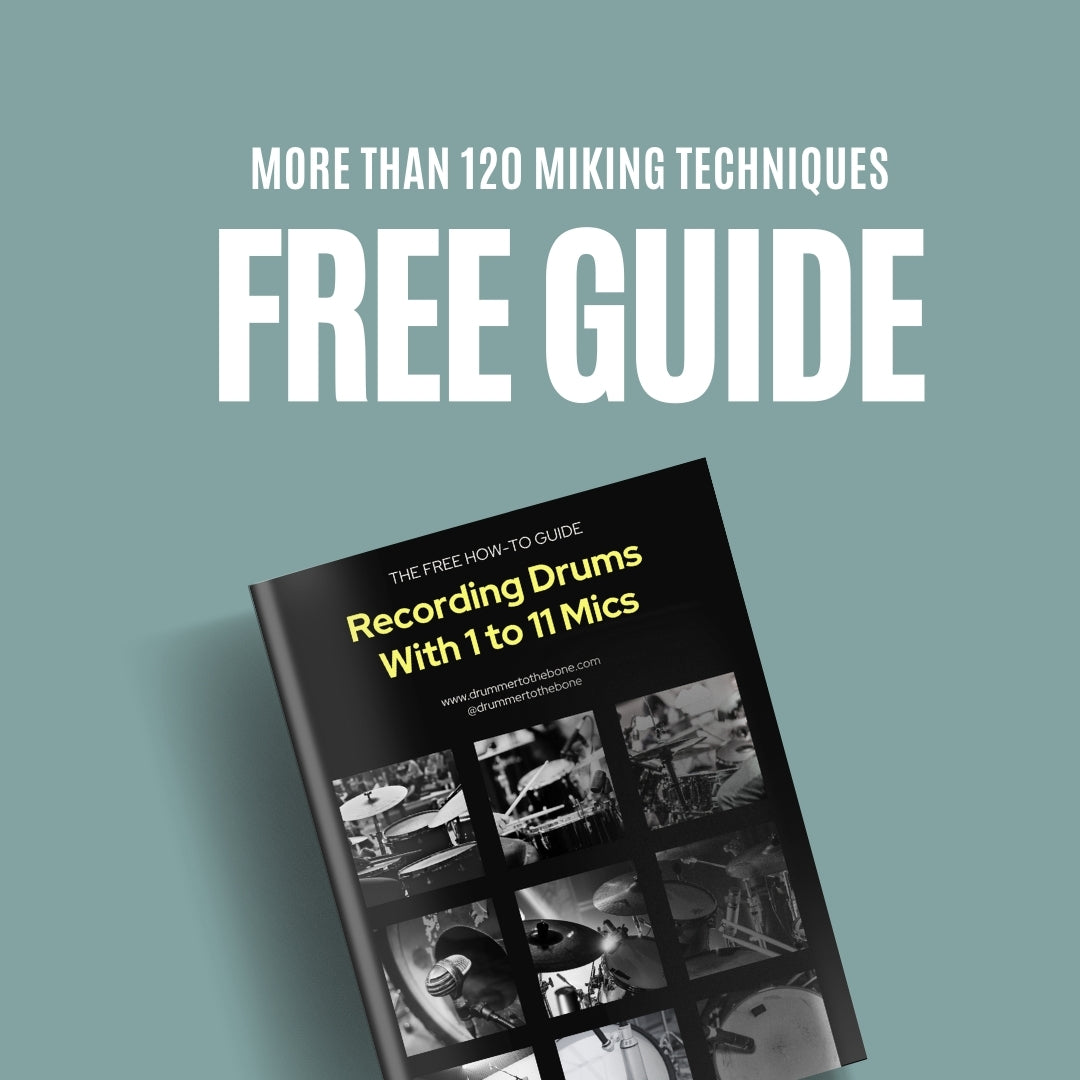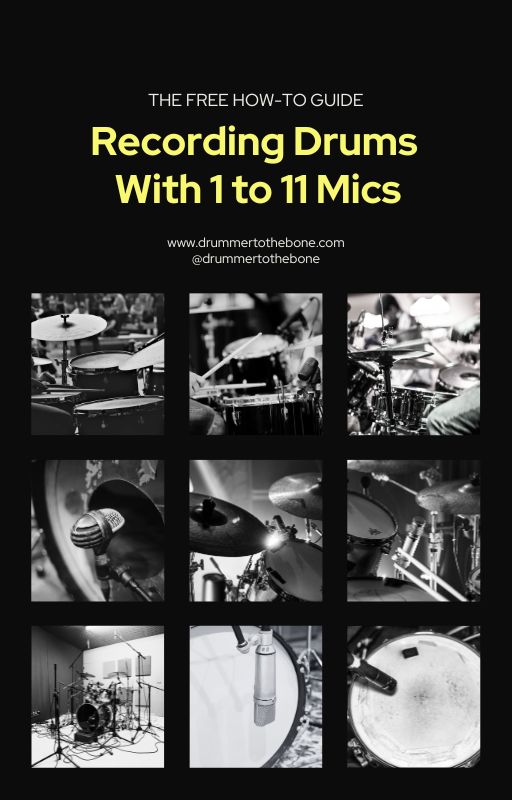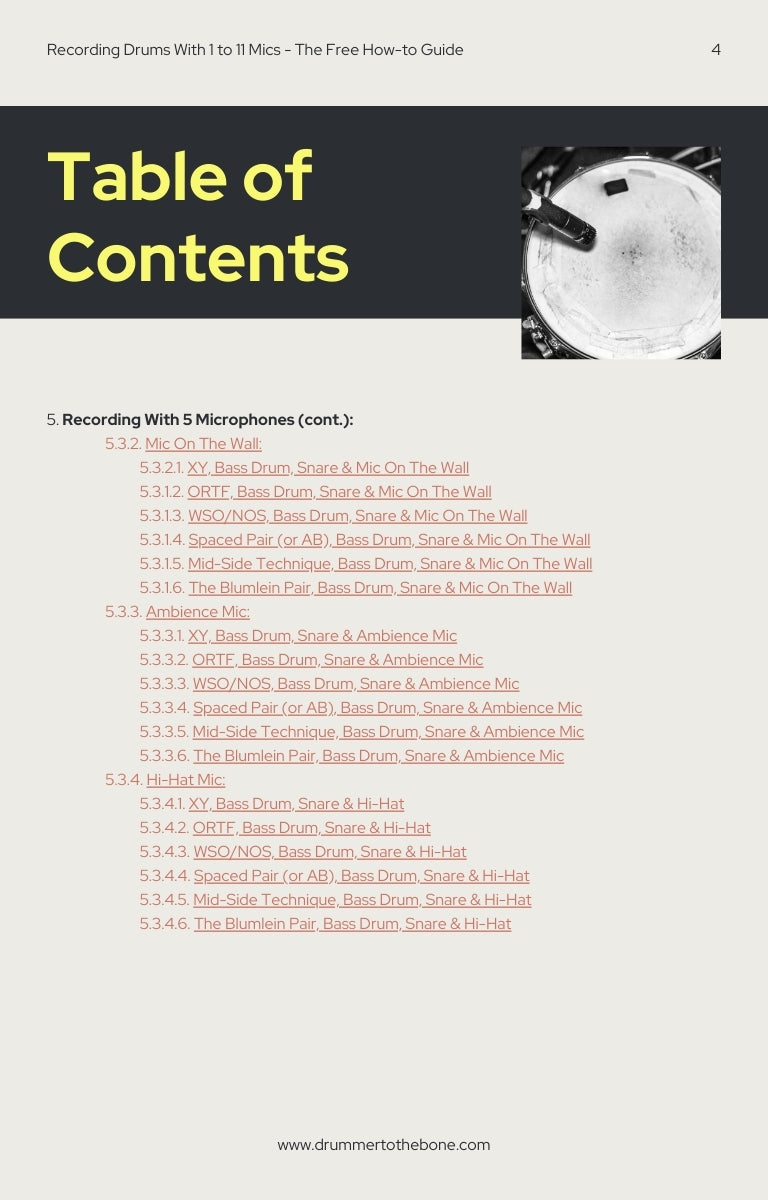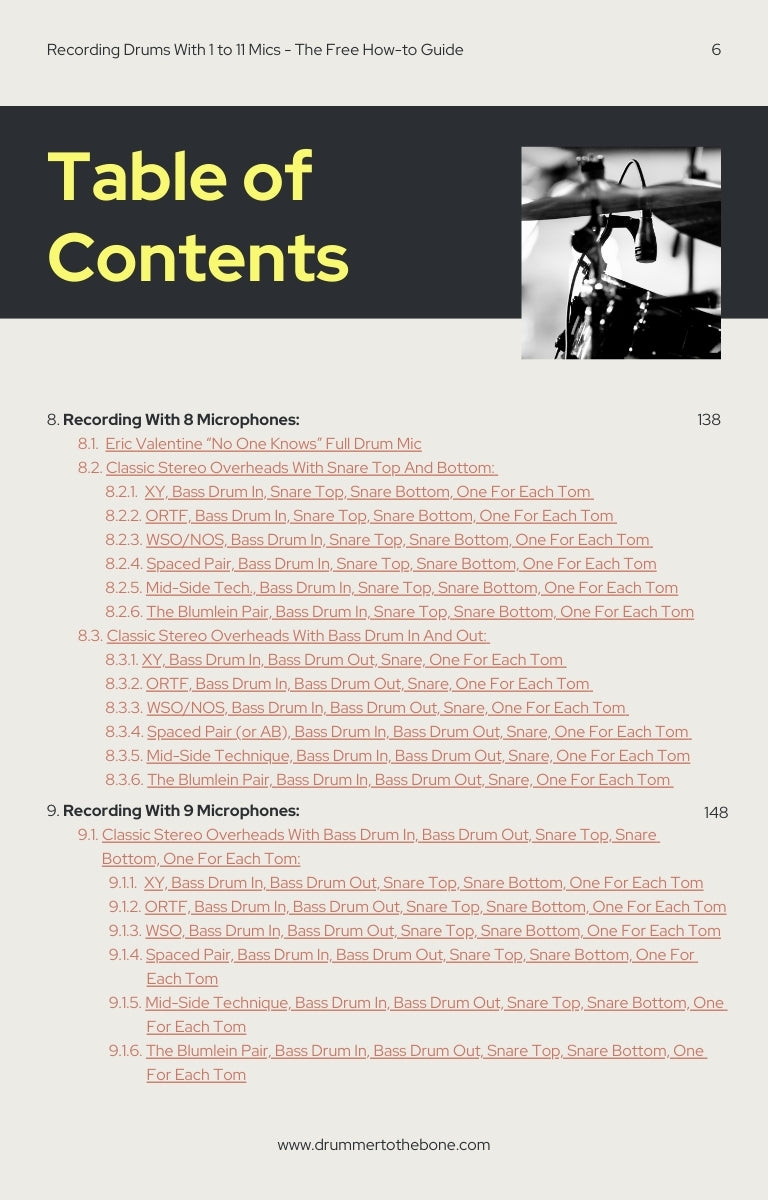This technique uses two condenser microphones of the same type with cardioid polar patterns. The microphones are placed at a 90° angle from one another at about 3 feet from the snare, above the cymbals. The key is to align the two mic capsules on a single axis. The horizontal and vertical plane positioning should be the same for both microphone capsules and they should be close enough that they're nearly touching each other. That’s why this technique is also referred to as “Coincident Pair” because of this exact “nearly touching”.
You should start with a 90° angle between the capsules, but you can increase the width of the pair up to 135° if needed.

This technique tends to be the default miking technique for many engineers, and it does have a number of pros to it:
- You get a clear sound.
- Great mono compatibility. Since both mics are virtually at the same place, although picking opposite spectrums, the mix is exceptionally balanced. If you bounce the mix to mono in your DAW, you shouldn’t find signs of “out of phase." If you know your mix will be played on a single speaker, this would be a good choice.
- Easy setup.
- It usually produces the perfect sound for “supporting role." This technique is great when the drums aren’t really going to be the focal point. The balanced sound will serve you well.
Cons:
- If you want a spread, super-stereo drum sound, then this is not your choice.



